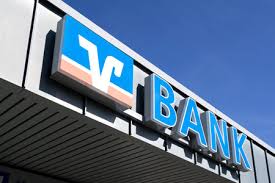Cooperative banking has a long and significant history in Germany, where the cooperative model is deeply rooted in the financial and social structure of the country. This banking system, known as “Genossenschaftsbanken,” serves millions of Germans and plays a vital role in the local economy. Cooperative banks in Germany are founded on the principles of self-help, self-governance, and self-responsibility, where customers are also owners and shareholders of the institution.
Origins and Historical Context
The cooperative banking system in Germany originated in the mid-19th century as a response to the challenges faced by small-scale farmers, artisans, and workers who had limited access to credit. Two prominent figures, Friedrich Wilhelm Raiffeisen and Hermann Schulze-Delitzsch, are credited with laying the foundation for cooperative banking in the country.
- Friedrich Wilhelm Raiffeisen: Focused on creating rural cooperatives to support farmers and agricultural workers. His work laid the groundwork for rural cooperative banks, which helped struggling farmers obtain affordable loans and stabilize their economic conditions.
- Hermann Schulze-Delitzsch: His focus was on creating urban cooperatives to support small businesses, artisans, and tradespeople. His model was designed to meet the credit needs of urban workers and small entrepreneurs.
These two pioneers established a foundation for a cooperative financial system that emphasized the importance of collective responsibility and mutual support, principles that still govern cooperative banks today.
Structure and Governance
German cooperative banks operate on a democratic structure where each member has one vote, regardless of the amount of money they have deposited or invested. This contrasts with commercial banks, where voting rights are typically proportional to the number of shares owned.
The ownership structure of cooperative banks is also different. These banks are owned by their members, who are both customers and shareholders. This dual role allows customers to have a say in the bank’s management and operations. Decisions are made through general meetings, where members can elect representatives to the supervisory board. The profits are either reinvested into the bank or distributed among the members, reflecting the cooperative ethos of shared benefit.
Key Features of Cooperative Banks in Germany
- Local Focus: One of the key characteristics of cooperative banks is their commitment to local communities. These banks have a strong regional presence and prioritize local economic development. They are particularly important in rural areas, where access to financial services might be limited.
- Customer Ownership: In cooperative banks, customers are also the owners. This means that these banks operate primarily for the benefit of their members, not external shareholders. As a result, they tend to have lower fees and offer more personalized services.
- Risk Sharing: The cooperative model allows for the pooling of resources and risks among members. This risk-sharing mechanism helps to create a more stable financial environment, especially during economic downturns. Cooperative banks tend to focus on conservative, long-term strategies to ensure the financial well-being of their members.
- Support for Small and Medium-Sized Enterprises (SMEs): Cooperative banks are crucial in financing SMEs, which form the backbone of the German economy. By offering affordable loans and tailored financial products, cooperative banks help local businesses grow and sustain their operations.
- Sustainability and Ethics: Cooperative banks often emphasize sustainable and ethical banking practices. Their business model is designed to serve the interests of their members and the broader community rather than focusing solely on profit maximization. Many cooperative banks in Germany also engage in socially responsible investments and support initiatives that promote environmental sustainability.
The Role of Cooperative Banks in the German Economy
Cooperative banks are an essential part of the German banking sector. They represent approximately one-third of all banking institutions in the country. According to the Bundesverband der Deutschen Volksbanken und Raiffeisenbanken (BVR), the association representing cooperative banks in Germany, there are around 800 cooperative banks serving more than 30 million members.
Cooperative banks offer a wide range of services, including savings accounts, loans, mortgages, and insurance products. They cater to individuals, families, SMEs, and even larger corporations. These banks are particularly strong in rural areas and among agricultural communities, but they also serve urban clients and have diversified their services to meet the changing needs of the economy.
Challenges and Adaptation
Despite their success, cooperative banks in Germany face several challenges in the modern financial landscape. The increasing complexity of regulatory requirements, the pressure to digitize banking services, and competition from online and fintech companies are some of the hurdles they must navigate. However, their strong local ties, customer loyalty, and democratic governance model give them a unique advantage in addressing these challenges.
Many cooperative banks have embraced digital transformation by developing user-friendly online banking platforms and mobile applications to cater to the needs of tech-savvy customers. Additionally, they continue to focus on their core principles of mutual support and ethical banking, which resonate with a growing number of socially conscious consumers.
Conclusion
Cooperative banking in Germany stands as a testament to the enduring power of collective action and mutual responsibility. With their focus on serving local communities, supporting small businesses, and promoting ethical banking practices, cooperative banks play a vital role in the German financial system. Despite the challenges posed by the evolving banking landscape, their unique model continues to offer significant advantages, ensuring that they remain a cornerstone of the country’s economic and social fabric.




